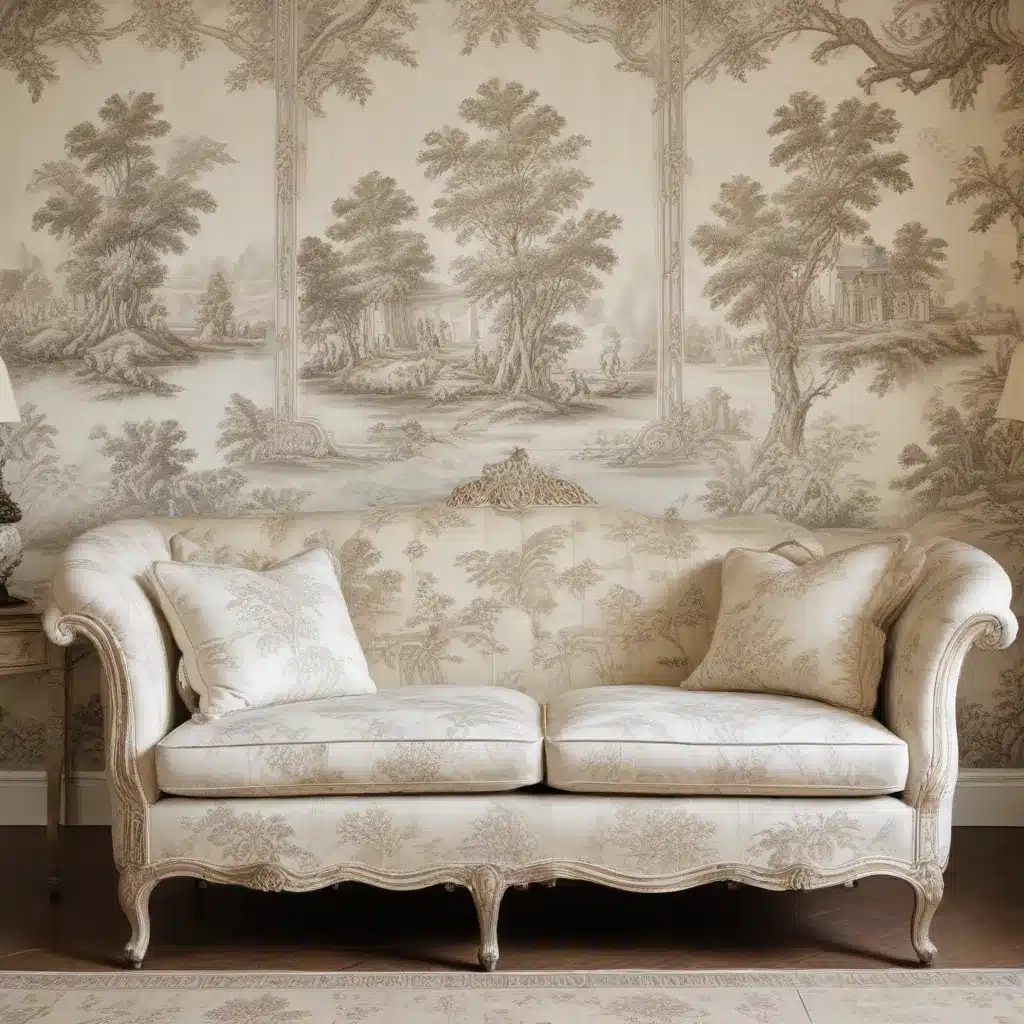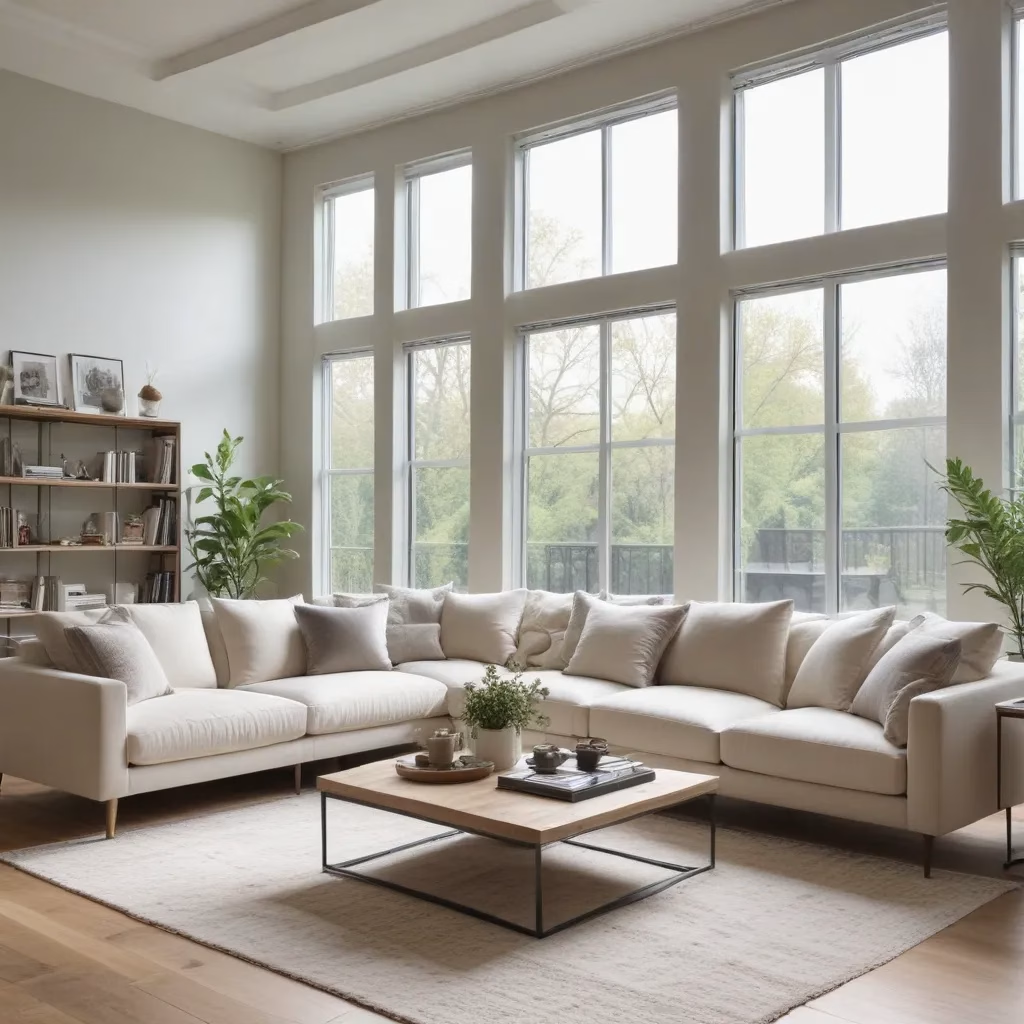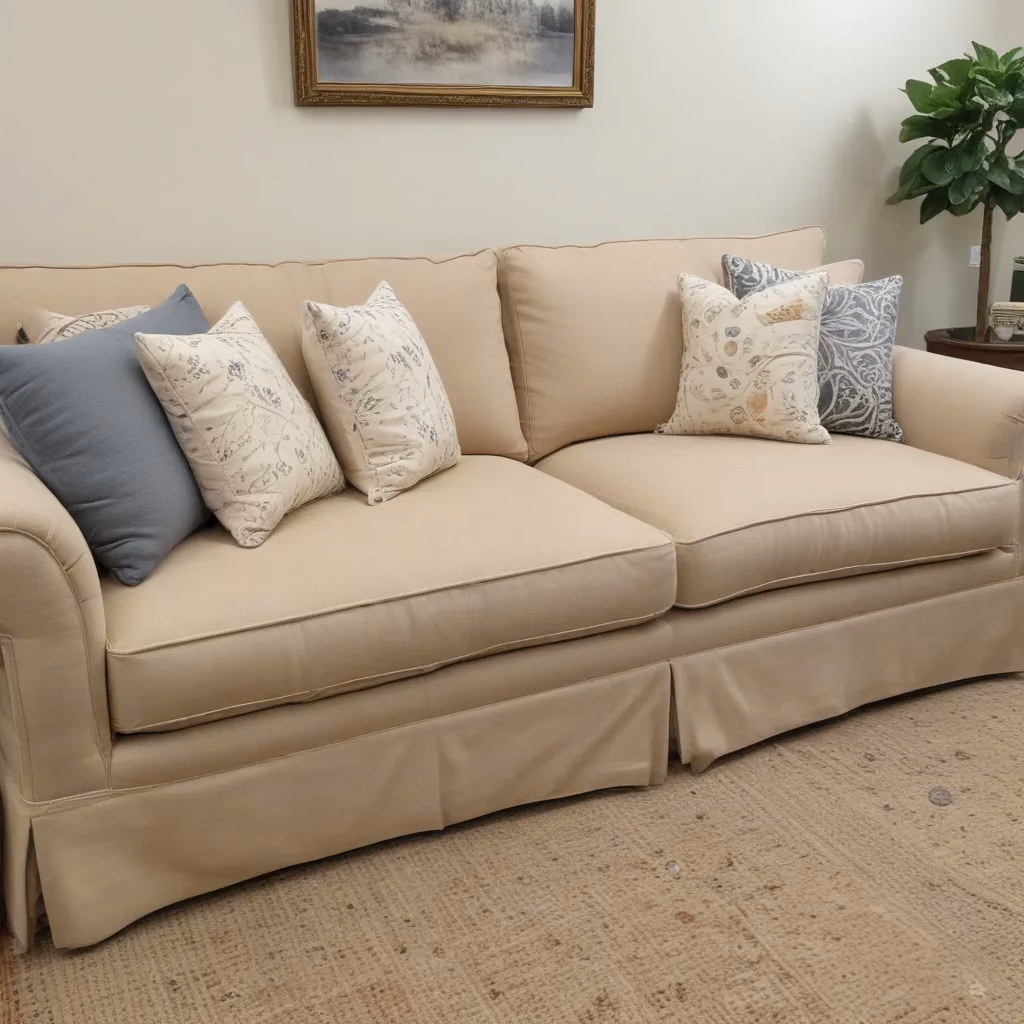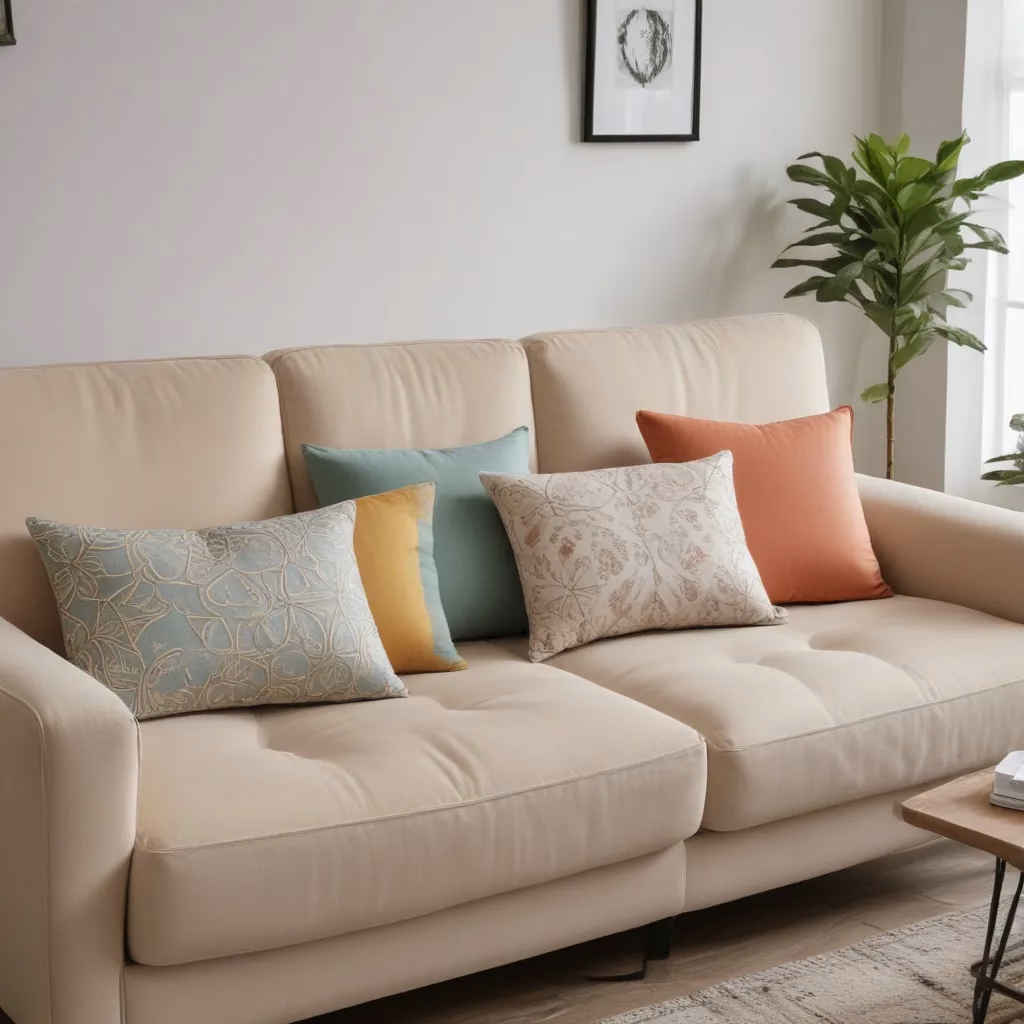
The Charm of Toile in Modern Interiors
As a furniture specialist, I’ve seen countless design trends come and go, but few have captivated me quite like the enduring appeal of toile. This classic fabric, with its intricate patterns and timeless elegance, has found a special place in contemporary interiors, especially when it comes to sofas and upholstery.
Toile, derived from the French word for cloth, typically features elaborate scenes printed on a light background. These designs often depict pastoral landscapes, historical events, or charming vignettes of daily life. What I find particularly fascinating about toile is its ability to tell a story through fabric, creating a focal point in any room.
In my experience, toile-upholstered sofas can transform a space from ordinary to extraordinary. The fabric’s detailed patterns add depth and interest, making even the simplest sofa silhouette appear sophisticated and thoughtfully curated. I’ve noticed that homeowners who choose toile for their sofas often find themselves drawn into the fabric’s narrative, discovering new details with each glance.
Selecting the Perfect Toile for Your Sofa
When it comes to choosing toile for your sofa, there are several factors to consider. First and foremost, think about the scale of the pattern. Large, sweeping scenes work well on expansive sofa backs and cushions, while smaller, more intricate designs can be perfect for accent pillows or smaller furniture pieces.
Color is another crucial aspect. While traditional toile often features a single color on a light background, modern interpretations have expanded the palette. I’ve seen stunning examples of toile in unexpected color combinations that breathe new life into this classic pattern. Consider the existing color scheme in your room and how the toile will complement or contrast with it.
Lastly, don’t forget about the fabric’s durability. As beautiful as toile can be, it’s essential to choose a fabric that can withstand daily use. In my professional opinion, cotton and linen blends offer a good balance of aesthetics and practicality for sofas. These natural fibers not only look beautiful but also tend to age gracefully, developing a lovely patina over time.
Maintaining Your Toile-Upholstered Sofa
One question I often get from clients is how to care for their toile-upholstered sofas. The good news is that with proper maintenance, these pieces can remain stunning for years to come. Here are some tips I’ve gathered from my years in the furniture industry:
-
Regular vacuuming is key. Use a soft brush attachment to gently remove dust and debris from the fabric’s surface.
-
Address spills immediately. Blot (don’t rub!) any liquid spills with a clean, white cloth to prevent staining.
-
Consider professional cleaning once a year, especially for high-traffic areas or homes with pets and children.
-
Use arm covers and throw pillows to protect high-wear areas of your sofa.
-
Keep your toile sofa out of direct sunlight to prevent fading of the intricate patterns.
By following these simple steps, you can ensure that your toile sofa remains a beautiful centerpiece in your home for years to come.
Pairing Toile with Other Design Elements
One of the aspects I love most about working with toile is its versatility in interior design. Despite its traditional roots, toile can be surprisingly adaptable to various design styles. I’ve seen it work beautifully in both classic and contemporary settings.
In a traditional room, toile pairs wonderfully with antique wood furniture and rich, jewel-toned accents. The key is to let the toile be the star of the show. I often advise clients to keep other patterns to a minimum when featuring a toile sofa, allowing the intricate design to truly shine.
For a more modern approach, consider pairing toile with sleek, minimalist furniture pieces. The contrast between the elaborate toile pattern and clean lines can create a striking visual impact. I once worked on a project where we paired a navy blue toile sofa with crisp white walls and metallic accents. The result was a fresh, contemporary take on a classic pattern.
Don’t be afraid to mix and match different scales of toile either. A large-scale toile on a sofa can be beautifully complemented by smaller toile patterns on throw pillows or curtains. The key is to maintain a cohesive color palette to tie everything together.
The History and Evolution of Toile
As someone who’s passionate about furniture and fabrics, I find the history of toile fascinating. Originating in Ireland in the mid-18th century, toile de Jouy (as it’s formally known) gained popularity in France, where it was produced in the town of Jouy-en-Josas.
Initially, toile patterns were carved on wooden blocks and stamped onto fabric. Later, copper plates were used, allowing for more intricate and detailed designs. These early toiles often depicted scenes from literature, mythology, or current events, serving as a form of storytelling through textiles.
Over the centuries, toile has evolved and adapted to changing tastes. While traditional toiles featured pastoral scenes in a single color, modern interpretations have expanded to include a wide range of subjects and color palettes. I’ve seen everything from whimsical animal motifs to urban cityscapes rendered in vibrant, unexpected hues.
This evolution is part of what makes toile so exciting to work with in contemporary interiors. It’s a fabric that honors its rich history while continually reinventing itself for modern tastes.
Toile Beyond the Sofa: Expanding Your Design Horizons
While toile-upholstered sofas are undoubtedly stunning, I always encourage my clients to think beyond the couch when incorporating this versatile fabric into their homes. Toile can be used in numerous ways to add character and charm to any space.
One of my favorite applications is using toile for window treatments. Whether as full-length curtains or Roman shades, toile drapery can frame a view beautifully while adding a touch of elegance to the room. I once worked on a project where we used a light, airy toile for curtains in a sunroom. The effect was magical, with the sunlight filtering through the fabric and casting intricate shadows on the floor.
Toile wallpaper is another fantastic option for those who want to make a bold statement. I’ve seen entire rooms transformed by floor-to-ceiling toile patterns. It’s particularly effective in smaller spaces like powder rooms or entryways, where it can create a jewel-box effect.
For a more subtle approach, consider using toile for accent pieces like throw pillows, lampshades, or even as framed artwork. These smaller touches can add depth and interest to a room without overwhelming the space.
The Future of Toile in Interior Design
As we look to the future of interior design, I’m excited to see how toile continues to evolve and adapt. One trend I’ve noticed is the increasing use of digital printing techniques to create custom toile designs. This opens up a world of possibilities for personalized patterns that tell unique stories or reflect specific interests.
Another exciting development is the use of eco-friendly materials and production methods in toile manufacturing. As sustainability becomes increasingly important in the furniture industry, we’re seeing more options for organic cotton and low-impact dyed toiles.
I also anticipate seeing more fusion between toile and other design styles. Imagine a traditional toile pattern rendered in a graffiti-inspired style, or a minimalist interpretation focusing on geometric shapes. The possibilities are endless, and it’s this ability to reinvent itself that keeps toile relevant and exciting in the world of interior design.
Incorporating Toile into Different Room Styles
One of the questions I’m often asked is how to incorporate toile into different room styles. The beauty of toile lies in its versatility, and I’ve seen it work wonderfully in a variety of settings. Here’s how I approach using toile in different design contexts:
In a traditional living room, a toile sofa can serve as the centerpiece. I often recommend pairing it with solid-colored accent chairs and classic wood furniture. The key is to let the toile pattern speak for itself without competing with too many other patterns.
For a modern space, consider using toile in unexpected ways. A sleek, contemporary sofa upholstered in a monochromatic toile can create an interesting juxtaposition. I once worked on a project where we used a black and white toile on a low-profile sectional, paired with industrial-style metal side tables. The result was a fresh, edgy take on a classic pattern.
In a rustic or country-style room, toile fits right in. I love using toile with weathered wood furniture and natural textures like jute or sisal. A toile-upholstered armchair next to a stone fireplace can create a cozy, inviting nook.
For eclectic interiors, don’t be afraid to mix toile with other patterns. The key is to vary the scale of the patterns and stick to a cohesive color palette. I’ve successfully paired toile with stripes, florals, and even animal prints for clients who love a bold, maximalist look.
Caring for Your Toile Upholstery: Advanced Tips
While I’ve already touched on basic care for toile upholstery, I’d like to share some advanced tips for those looking to preserve their toile sofas for years to come:
Rotation is key. If your sofa has removable cushions, rotate them regularly to ensure even wear. This is especially important for areas that see a lot of use, like seat cushions.
Consider using fabric protectors. While some purists might balk at the idea, a high-quality fabric protector can help repel stains and make cleaning easier. Always test on an inconspicuous area first to ensure it doesn’t affect the fabric’s appearance.
Be mindful of sunlight exposure. UV rays can fade toile patterns over time. If your sofa is near a window, consider using UV-blocking window film or rotating your furniture periodically to prevent uneven fading.
Handle with care when cleaning. If you need to spot clean, always work from the outside of the stain inward to prevent spreading. Use a gentle, fabric-appropriate cleaner and avoid overwetting the area.
Consider professional reupholstering. If your beloved toile sofa is showing signs of wear, don’t hesitate to have it professionally reupholstered. A skilled upholsterer can breathe new life into an old piece, preserving its charm for future generations.
The Psychology of Pattern: Why Toile Resonates
As a furniture specialist, I’m always intrigued by the psychological impact of different design elements. Toile, with its intricate patterns and storytelling qualities, has a unique effect on our perception of space and mood.
Patterns, in general, can affect our emotions and behavior in subtle ways. Toile, with its repeating motifs and often pastoral scenes, can create a sense of calm and continuity in a room. The familiar, repetitive nature of the pattern can be soothing to the eye and mind.
Moreover, the narrative quality of toile can spark imagination and curiosity. I’ve had clients tell me how they love to trace the scenes in their toile upholstery, discovering new details each time. This interactive quality can make a space feel more engaging and personal.
The scale of toile patterns can also influence our perception of space. Larger toile patterns can make a room feel more spacious, while smaller, more intricate designs can add a sense of coziness and intimacy.
Toile in the Context of Broader Design Trends
While toile has a timeless quality, it’s interesting to see how it fits into broader design trends. In recent years, there’s been a renewed interest in traditional design elements, often with a modern twist. This “grandmillennial” or “granny chic” trend has brought toile back into the spotlight.
At the same time, the trend towards more personalized, eclectic interiors has made toile an attractive option for those looking to add character to their spaces. The story-telling aspect of toile aligns well with the desire for homes that reflect individual personalities and interests.
Sustainability is another major trend in interior design, and toile can play a role here too. By choosing high-quality, durable toile upholstery, homeowners can invest in pieces that will last for years, reducing the need for frequent replacements.
Conclusion: The Timeless Appeal of Toile
As we wrap up our exploration of toile, I’m reminded of why this fabric has endured for centuries and continues to captivate designers and homeowners alike. Its blend of artistry, storytelling, and versatility makes it a truly special element in interior design.
Whether you’re drawn to traditional toile patterns or excited by modern interpretations, there’s a toile out there for every style and preference. From sofas that serve as the focal point of a room to subtle accents that add depth and interest, toile has the power to transform spaces and create lasting impressions.
As a furniture specialist, I’ve had the privilege of working with toile in countless projects, and each time, I’m struck by its ability to bring character and charm to a space. It’s a fabric that invites contemplation, sparks conversation, and adds a touch of timeless elegance to any interior.
So, the next time you’re considering a refresh for your home, why not explore the world of toile? You might just find yourself falling in love with this enduring classic, just as I have throughout my career.
For more inspiration and expert advice on incorporating toile and other design elements into your home, visit Sofa Spectacular. We’re here to help you create spaces that are not just beautiful, but meaningful and uniquely yours.



